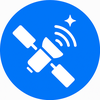AI Surveillance Normalization in Enterprise Environments
What It Is
AI surveillance in workplace environments has transitioned from niche implementation to normalized standard practice. Through productivity dashboards, HR filtering systems, and compliance monitoring infrastructure, algorithms now observe, assess, and increasingly determine how professionals work and whether they maintain employment.
Enterprise platforms like Microsoft Purview exemplify this transformation. While not marketed as "surveillance," Purview includes:
Communication Compliance: Flags tone, language patterns, and keywords across chat and email communications
Insider Risk Management: Behavioral scoring algorithms to predict intent and risk factors
Data Loss Prevention (DLP): Scans outbound content against policy rule violations
Audit Logging: Detailed tracking of access patterns, timing, and user behavior
Functions previously requiring managerial judgment now operate silently in background systems, quantifying, scoring, and sometimes triggering automated actions.
Why It Matters Beyond IT Infrastructure
AI surveillance represents governance decisions with profound cultural, legal, and human implications rather than mere technology choices.
For professionals managing careers, families, and organizational transformations, this creates compounded challenges:
Parental Impact: Systems interpret breaks or fragmented attention as disengagement. School obligations appear as productivity threats.
Professional Development: Young professionals lose agency, evaluated through algorithmic alignment rather than work quality. Privilege-based management yields to metrics-based gatekeeping.
Marginalized Worker Amplification: Already overrepresented in disciplinary flags and underrepresented in leadership pipelines, marginalized employees face amplified systematic harm.
Decision-Maker Complicity: Leaders adopting Microsoft 365 or Google Workspace without reconfiguring default surveillance features become complicit by implementation.
The corporate workspace functions as proving ground for AI surveillance logic bleeding into education, healthcare, and civic environments, impacting learning processes, healthcare access, and truth verification mechanisms.
Systems in Active Enterprise Use
Current practice examples demonstrate widespread deployment:
HireVue / Pymetrics: Facial movement and vocal tone analytics during interview processes
Microsoft Purview: Continuous scanning of Teams, Outlook, SharePoint for "compliance" risk identification
ActivTrak / Teramind / Hubstaff: Live screen monitoring, input logging, comprehensive behavioral profiling
Workday People Analytics: Predictive attrition and promotion scoring based on behavioral data analysis
These represent embedded defaults rather than edge case implementations.
Strategic Insight
Surveillance markets itself as technical solution to cultural failure: trust deficits. In reality, surveillance systems create the dysfunction they claim to resolve. They replace leadership with dashboard metrics, collaboration with suspicion, and professional autonomy with gamified compliance requirements.
This constitutes control theater rather than innovation.
Critical Truth: AI surveillance doesn't measure productivity. It enforces conformity.
Conformity eliminates capacities that AI-era organizations actually require: initiative, constructive dissent, intellectual curiosity, lateral thinking, and emotional intelligence.
Professional Consideration: For IT colleagues who built reputations based on trust and reliability with non-technical coworkers, implementing surveillance against colleagues will backfire and undermine professional standing. IT departments should avoid being perceived as threats through appropriate implementation choices.
Key Takeaways for IT Professionals
Refuse Normalization
Surveillance represents design choice rather than technological inevitability. These decisions often proceed without appropriate scrutiny.
Shift from Monitoring to Ownership
Use AI for bottleneck identification rather than behavior tracking. Support self-directed data boundary control.
Replace Risk Scores with Scoped Trust
Implementation Framework:
- Set roles with explicit operational boundaries
- Use Just-In-Time (JIT) access and Role-Based Access Control (RBAC)
- Audit stale permissions rather than human behavioral patterns
Make Policy and Privacy Visible
Inform stakeholders and enable informed consent or challenge processes. Governance without transparency constitutes coercion.
Use Enterprise Tools Ethically
Systems like Purview can support organizational trust but only through redesigned default logic. Without intervention, they evolve toward control-focused implementation.
Strategic Framework Conclusion
Surveillance-first workplaces demonstrate brittleness. They fracture rather than scale human potential, creating organizational environments that undermine the creative and collaborative capabilities essential for AI-era success.
IT professionals hold responsibility for implementing these systems ethically, designing frameworks that enhance organizational capability while preserving human agency and professional trust relationships essential for long-term organizational effectiveness.
The choice involves whether technology serves human flourishing or control mechanisms. This decision shapes not only workplace culture but broader societal norms around privacy, autonomy, and human dignity in digital environments.
Advanced Discussion Framework
Use the provided LLM prompt for comprehensive analysis of workplace surveillance implications. Compatible with ChatGPT-4o and Llama3.3:70b through instruct interfaces. Customize language preferences and add specific job role context for targeted exploration of ethical AI surveillance implementation in your organizational environment.
MY ROLE: [YourRole] e.g. “Head of People Analytics”, “CIO”
OUTPUT LANGUAGE: [LANGUAGE] e.g. “English”, “Deutsch”, “Čeština”
---
## CONTEXT
You have access to the following core material:
- AI surveillance tools like Microsoft Purview, HireVue, and ActivTrak go far beyond basic monitoring—they analyze behavior, communication tone, attention, and so-called “productivity signals.”
- These systems shape performance evaluations, hiring decisions, and risk alerts—often without sufficient transparency or user understanding.
- They can erode trust, disrupt collaboration, and shift organizations toward risk-averse, compliance-driven cultures.
- Leaders may unknowingly base decisions on opaque, biased, or misaligned metrics.
- Transitioning toward a **post-surveillance model** is achievable—and increasingly critical for resilient, intelligent organizations.
---
## TASK
You are my expert advisor and thought partner.
We are going to **collaboratively explore how AI surveillance systems impact autonomy, culture, and leadership—and how to build more trust-aligned alternatives.**
Here’s how I want us to work together:
---
### 1. **Start by asking me about my current context**
→ e.g. team structure, sector, use of monitoring tech, leadership views on analytics
→ tailor your guidance to my actual organizational dynamics
---
### 2. **Step through these discussion points in sequence—but interactively**
→ Pause and ask clarifying questions before responding
→ Adjust based on my input and strategic concerns
**Discussion points:**
- What modern AI surveillance systems *really do* (beyond activity logs or access audits)
- How they shift power, affect leadership decisions, and change team dynamics
- Cultural and psychological impacts of continuous behavioral scoring
- Common misunderstandings about “compliance tech” and where overreach happens
- Practical steps to transition toward **transparent, opt-in, value-aligned oversight**
- How to manage risk, compliance, and productivity *without* invasive tracking
---
### 3. **Offer to go deeper whenever useful**
→ Suggest zoom-ins, e.g. “Shall we unpack how Purview flags communication risk, or explore how scoring affects performance reviews?”
---
### 4. **Use examples based on my role**
→ CIO? Focus on collaboration metrics and tool governance
→ Legal/compliance lead? Focus on contractual risk and regulatory ambiguity
→ People analytics head? Focus on ethical data use and employee perception
---
### 5. **Propose simple visuals or models when ideas get complex**
→ Offer frameworks like trust-impact matrices, opt-in analytics models, or governance playbooks
---
### 6. **Make everything actionable**
→ Each insight should lead to something I can bring to my leadership team, challenge in a tech evaluation, or reshape in our policies
---
## DELIVERABLE
Act as a **live collaborator**: ask first, then explore, clarify, and iterate.
Your goal is to help me **lead with intelligence—not surveillance** by building systems that protect autonomy, earn trust, and support real productivity.
---
**BEGIN THE INTERACTIVE DISCUSSION NOW.**


